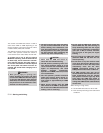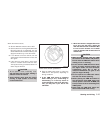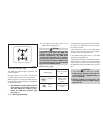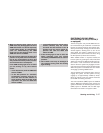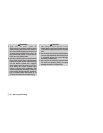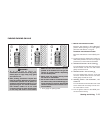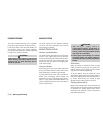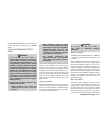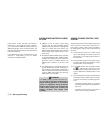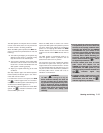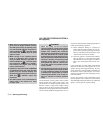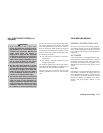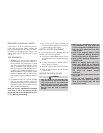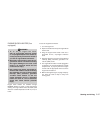
pedal. This is normal and does not indicate a
malfunction. If the computer senses a malfunc-
tion, it switches the ABS off and illuminates the
ABS warning light on the instrument panel. The
brake systemthen operates normally,but without
anti-lock assistance.
If the ABS warning light illuminates during the
self-test or while driving, have the vehicle
checked by a NISSAN dealer.
● ABLS is a form of traction control using
sensors from the Anti-lock Brake System
(ABS)to transferpowerfrom aslipping drive
wheel to a wheel with more traction. The
ABLS systemapplies brakingto the slipping
wheel, which helps redirect power to an-
other wheel.
● On4WDmodels theABLSsystem operates
in both 4Hand 4LO modes. If4WD mode is
engaged, the ABLS system will operate for
both drive axles. On 2WD vehicles, the
ABLS system operates on the drive axle
only.
● The ABLS system is always ON unless the
system detects brake pad overheating. If
high brake pad temperature is detected, it
will turn OFF, but normal brake function will
continue. ABLS will function even when the
VDC system is turned OFF.
WARNING
The ABLSsystem provides increasedtrac-
tion, but will not prevent accidents due to
abrupt steering operation or by careless
driving or dangerous driving practices.
Reduce vehicle speed and be especially
careful when driving and cornering on
slippery surfaces, and always drive
carefully.
TheVehicleDynamic Control(VDC) systemuses
various sensors to monitor driver inputs and ve-
hicle motion. Under certain driving conditions,
the VDC System helps to preform the following
functions:
● Controls brake pressure to reduce wheel
slip on one slipping drive wheel so power is
transferred to a non slipping drive wheel on
the same axle.
● Controls brake pressure and engine output
to reduce drive wheel slip based on vehicle
speed (traction control function).
● If the 4WD transfer case is shifted into 4LO
the
indicator light will come on and
the VDC system will be turned off. See “Us-
ing Four Wheel Drive (4WD)” earlier in this
section.
● Controlsbrake pressureatindividual wheels
andengine outputto helpthe drivermaintain
control of the vehicle in the following condi-
tions:
– understeer (vehicle tends to not follow
thesteered pathdespite increasedsteer-
ing input)
– oversteer (vehicle tends to spin due to
certain road or driving conditions)
ACTIVE BRAKE LIMITED SLIP (ABLS)
SYSTEM
VEHICLE DYNAMIC CONTROL (VDC)
SYSTEM
5-32 Starting and driving



